Galle’s history is a veritable tapestry of cultures. This Southwestern Sri Lankan seaport has been a cash cow for international seafaring traders and local rulers throughout the centuries. Arabs, Greeks, Romans, Chinese, and Persians all passed through Galle in their travels to buy and sell exotic spices and goods.
It seems that Sri Lanka’s prosperous seaport became the apple of Europe’s eye in the 16th century, and the Portuguese, Dutch, and British each had their sights set on Galle. Their presence left an everlasting mark on the city, and their influences can still be seen and felt to this day.
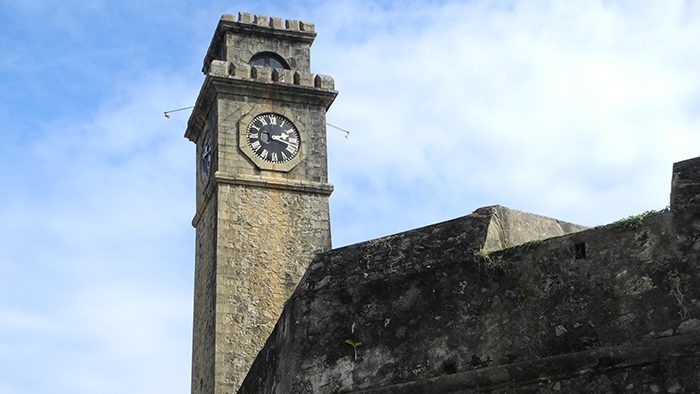
Today, Galle is a grand example of a fortified city built by Europeans in Southern Asia. Scattered throughout the city are distinctive European fortifications, churches, schools, street plans, and customs. It took a great deal of preparation and manpower to protect Galle from outside threats.
The Portuguese built the first fortifications in the 1580s. The Dutch East India Company improved on the original design in the 1660s and stayed for over 150 years, and the British enjoyed the fruits of the labor in flourishing Galle when they took over the city in 1796. It seems the town’s location has always been coveted and used as a means for trade.

Visitors now can experience the best of both worlds-Sri Lankan culture melded with European history. Seventy two percent of the city is Sinhalese and the main activity in Galle is touring the surviving colonial European infrastructure. Galle’s old town and its fortifications comprise a UNESCO World Heritage Site because they have been relatively unaltered since their origin.
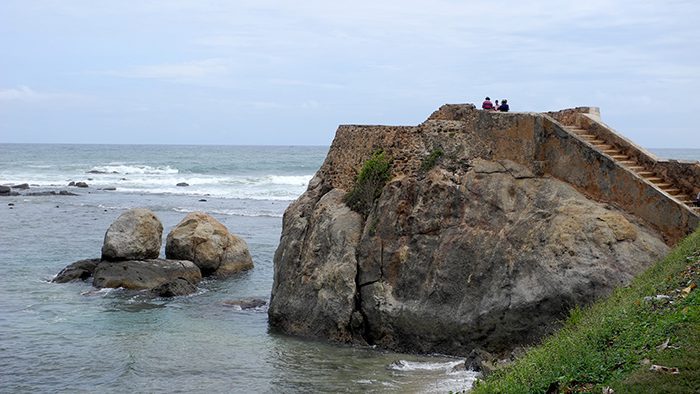
Tourists come by the hundreds to walk along the fortified walls on the Bay of Galle, buy delicate handmade lace, and to get great deals on locally mined moonstones. The fort’s colonial European architecture is reminiscent of days from long ago, when Galle was one of the most sought-after gems in the Indian Ocean.
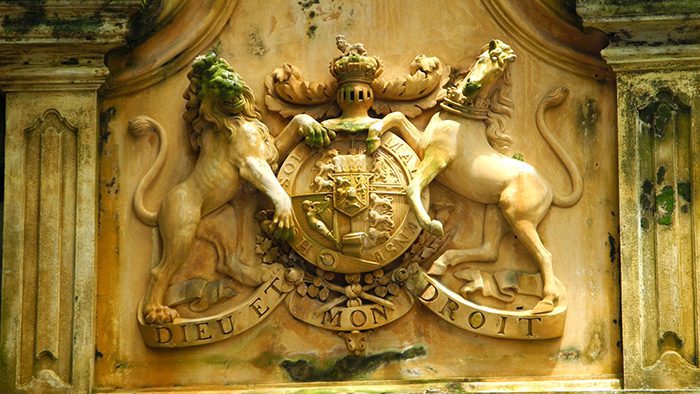
It could take a couple of days to explore Galle’s 130-acre colonial fort. The Galle Fort, often referred to as the Dutch Fort, is more of a small city than a stronghold. The Portuguese were the first to begin constructing here in 1588. After being seized by the Dutch in 1640, Galle was rebuilt, redesigned, and expanded into what we see today mostly by the Dutch East India Company (VOC). By using tough coral and granite building materials, the VOC was able to execute the project in true European fashion, achieving both grandness and functionality. Fortunately, the Galle Fort was so well built that it emerged virtually unscathed after the 2004 Indian Ocean Tsunami.
Check out 5 Things to See in Kandy, Sri Lanka
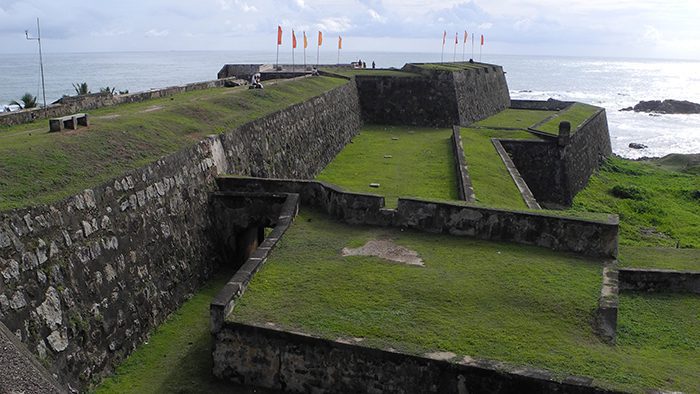
The Galle Fort is a unique area that holds a great deal to see and do. It will transport you back in time over 300 years with its distinctive charm and colonial architecture. The Dutch colonists arguably made the most significant improvements to the fort during their 156 years of occupation. One is the underground sewer system that was designed to self-clean with the tides of the ocean. The British eventually took the fort over on February 23, 1796, exactly one week after they captured Colombo. It would not be until 1948 that Sri Lanka gains full control of Galle Fort after becoming an independent nation.
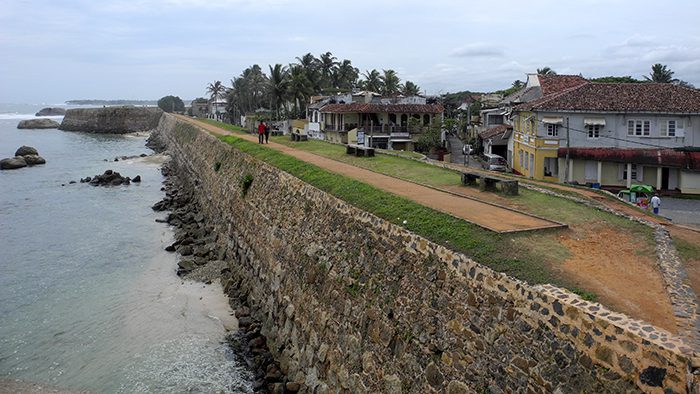
Begin your walking tour of Galle Fort at the Main Gate. You will know you’re in the right place when you look up and see a coat of arms flanked by a lion and a stallion that reads: DIEU ET MON DROIT. It is a 1668 depiction of the British Royal Seal that reads in French: “God and my right shall me defend.” Walking the Galle Fort clockwise will take you along the sea wall and to several of the Fort’s colonial structures. You will notice several bastions along the Galle Fort. They are scenic vantage points, but were built with a more strategic purpose. By positioning bastions (projections) along the fort, European troops could defend against invaders more effectively.
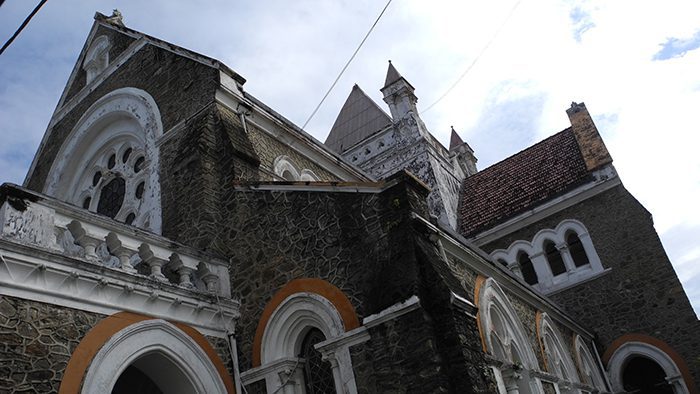
The Dutch Reformed Church (the Great Church, or Groote Kerk in Dutch) is located near the Commandment Bastion on Church Street. It is a small structure with a gabled roof that was built by the Dutch commander Casparus de Jong and his wife after the birth of their first son. It is still used for Protestant services twice a month. Inside, visitors can see the checkerboard stained glass windows, the aged organ, engraved Dutch gravestones, and the church’s antique pulpit. The structure was built in 1640 and later remodeled. The organ was received from another church in Colombo in 1760.

The Galle Fort Lighthouse is a white stone structure that was rebuilt by the British in 1939. Historically this 92-foot-high structure was used to guide merchant ships into the harbor and to Colombo with a gas lantern. It was the first lighthouse built in Sri Lanka, but because the original structure was made of wood, it perished in a fire in 1936. Nowadays, the refurbished lighthouse stands proudly atop Point Ultrecht Bastion.
Check out What to See in Yala National Park, Sri Lanka
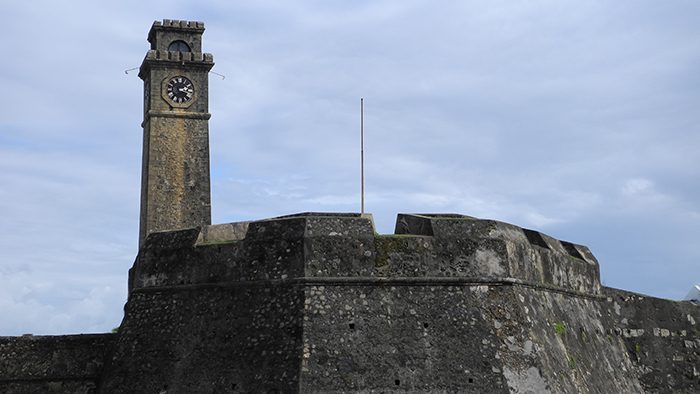
The 1707 Dutch clock tower, located near the Moon and Star Bastions, stands like an old stone sentinel over Fort Galle, watching over the sea fortress and all that remains within its walls.
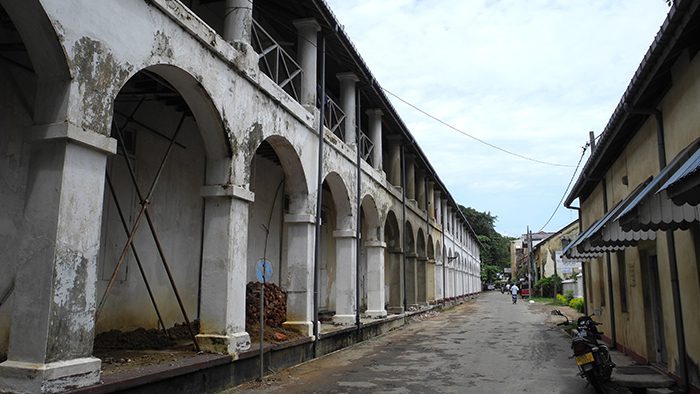
Other points of interest on the Fort include the Old Gate on Queen Street, the Dutch Museum (31 Leyn Baan Street), the National Culture Museum located near the Main Gate entrance, the 1868 All Saints Anglican Church on Church Street, Meeran Jumma Masjid, the old Arab quarters at the end of Church Street, and the National Maritime Museum that once served as the Great Warehouse (located inside the Old Gate). There are also numerous boutique hotels, private villas, restaurants, shops, colonial style residences, and other points of interest at Fort Galle. The area, although not the grandiose trade post it once was, is a bustling community with a rich history that should not be missed.
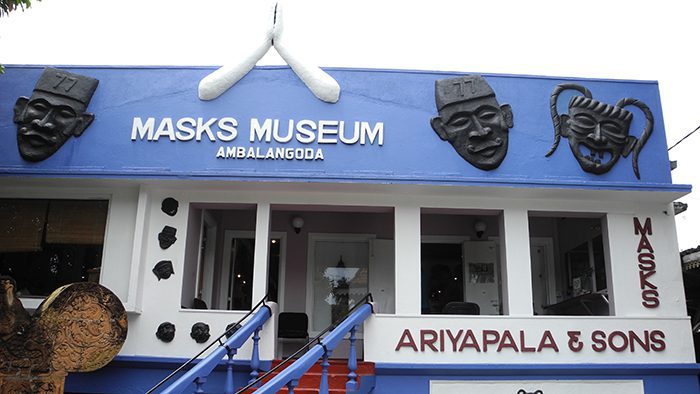
Ambalangoda is a town famous for its masks and other handicrafts. Located 25 kilometers northwest of Galle, it is easily accessed via the CGHW Highway (A-2). Pack up the family and head to Ambalangoda for an unforgettable cultural experience and a chance to purchase some of Sri Lanka’s most ornate handmade masks. Learn about the three different types of masks; Kolam, Raksha, and Sanni at Ariyapala & Sons Mask Museum (426 Main Street). The colorful masks are carved out of soft Balsa and Kuduru woods. Visitors will learn about Sri Lankan mask makers, the history behind the masks, the rituals they are used in, and the role masks play in modern Sri Lankan society. The Ariyapala & Sons Mask Museum also sells a variety of masks at fair prices. These masks make great gifts or keepsakes.
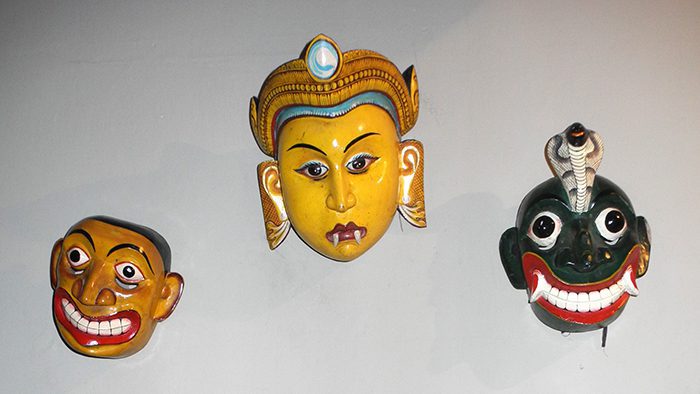
If you want to experience a different side of the local culture, the Ambalangoda is home to the Bandu Wijesooriya Dance Academy (corner of Galle Road and Main Street / +94 91 225 8948), which hosts weekly dancing shows using traditional masks. Visitors can watch traditional ritual dances, village dances, and Indian dances. For 10,000 LKR and two days notice, you’ll get your own private dance show. Contact the academy directly to arrange this incredible experience during your trip to Ambalangoda.
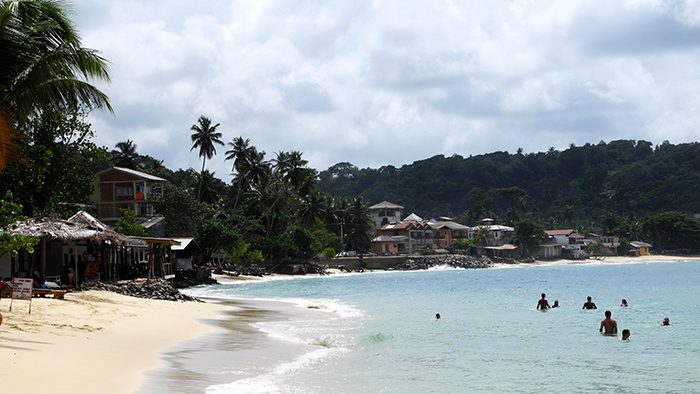
Unawatuna is an underdeveloped hidden gem that lies just six kilometers from Galle. A five-minute drive south along the CGHW Highway (A-2) will bring you to this legendary oasis that was once home to some of the world’s most beautiful beaches. The Unawatuna shore has recovered a great deal since being devastated in the 2004 tsunami, and is once again safe for swimming and lounging. When you are not tanning or mingling with other tourists along Unawatuna’s sands, you can walk a few steps into the shade of thatched umbrellas and order beverages or snacks from one of the local bars.
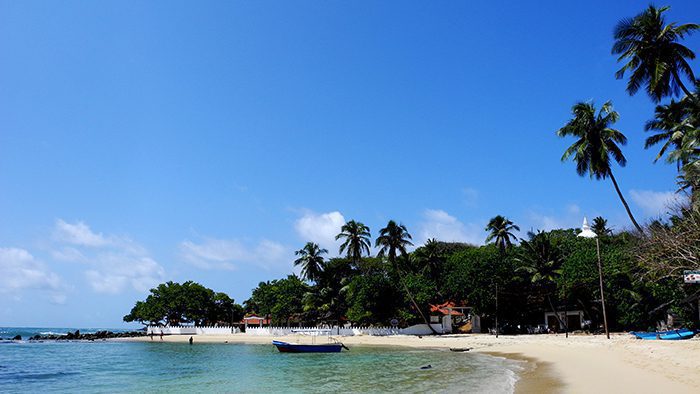
Unawatuna has a great laidback vibe, perfect for decompression and relaxation. The lush surroundings are home to dozens of native bird species like kingfishers, sandpipers, and herons. In addition to bird watching, Unawatuna is also renowned for snorkeling at Jungle Beach, scuba diving, and boat rides. The Shipwreck of the British steamer Rangoon is a popular dive spot about a 30-minute boat ride from the beach. Reservations and equipment rentals for these activities can be arranged at the beach or at any of the local dive centers. The easiest way to get around Unawatuna and to Jungle Beach is by tuk-tuk.
Check out the Top 12 Things to See and Do in Colombo, Sri Lanka
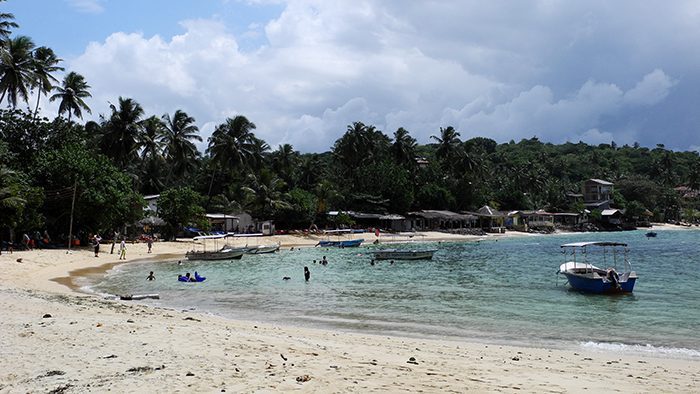
For a little more culture and a little less water, visitors also have the option of exploring the Rumassala temple with to-die-for views, or the ancient Yatagala Raja Maha Viharaya Buddhist rock temple that is over 2,300 years old and features an 18-foot-long reclining Buddha. The Yatagala Raja Maha Viharaya rock temple can be reached via the Unawatuna-Hinatigala Road.
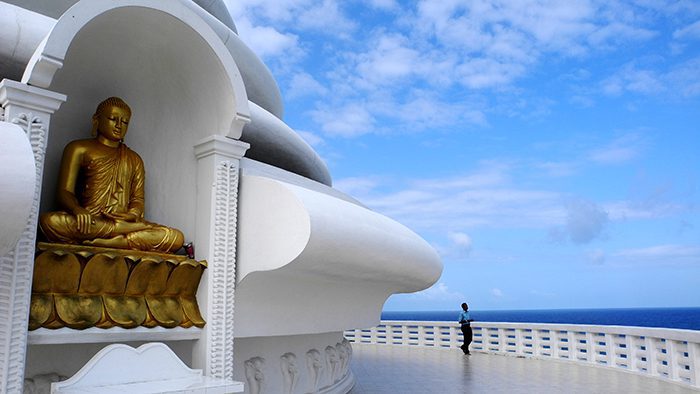
For the animal lover in you, visit the Habaraduwa Turtle Farm and Hatchery located about a mile from Unawatuna. Sri Lanka’s southern coast is nesting ground for five of the world’s seven species of sea turtles. The Habaraduwa Turtle Farm and Hatchery gives visitors lessons in conservation efforts and the opportunity to experience these amazing animals up close. The turtle farm is open daily 8 a.m. to 6:30 p.m.
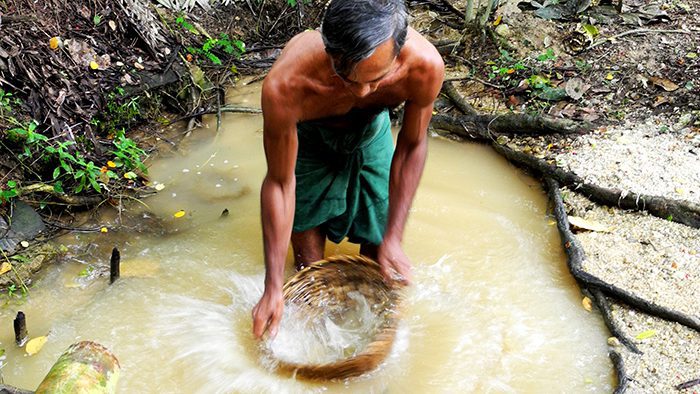
Located one mile along the CGHW (A-2) from Galle near Hikkaduwa, is Meetiyagoda, a town that is famous for its moonstones. The moonstone is a semi precious stone that comes in a variety of colors, and is commonly incorporated into jewelry. Outside of Sri Lanka, moonstones are mined in Australia, Mexico, Norway, Poland, the United States, and Madagascar. Unlike in other countries, the blue moonstone is commonly mined in Sri Lanka. The best way to learn about and shop for moonstones is to head directly to Beruwalage Gems & Jewellery (+94 91 226 0343) for an authentic and unique experience.
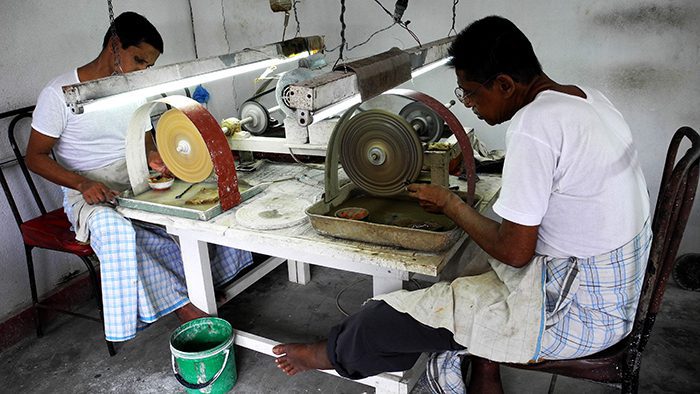
If you request to tour the complex, you can see the mineshaft, the sifting process, check out some uncut raw moonstones, learn about the stone cutting techniques, and then introduced to the lovely finished products. Ancient Greeks and Romans believed these stones to be solidified moon rays. Nowadays, people buy them just because they are attractive, exotic, and cost significantly less than precious stones. Buying moonstones near the source is much cheaper than buying them in Colombo. Whenever purchasing a moonstone, be sure to get a certificate of authenticity from the jeweler.
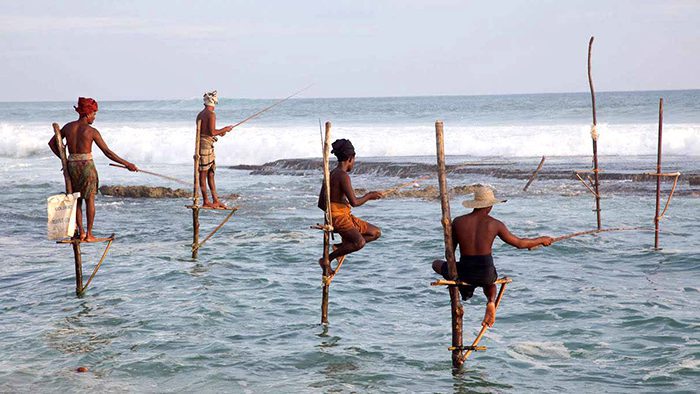
There are only a handful of traditional fishing practices left in the world and Weligama stilt fishing is one of the most remarkable long-standing techniques of catching fish you will ever see. No boat is used, just a stilt and a fishing rod makes the fishermen of Weligama look like sentinels of the beach perched on their poles. The town is located at the southern corner of the country about 24 kilometers from Galle, and is accessed via the CGHW (A-2). Weligama is a sleepy fishing village with beautiful views of the Weligama Bay and home to one of the best surf spots in the Indian Ocean with sections for beginners and seasoned surfers alike.
Check out What to See and Do in Anuradhapura, Sri Lanka
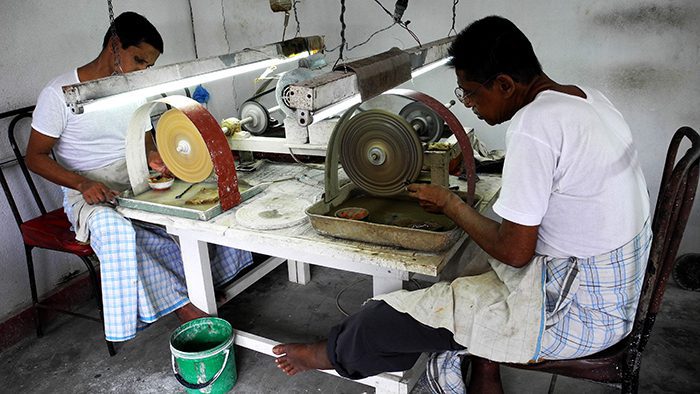
Weligama is surrounded by coconut and rubber tree plantations. Visitors can arrange tours of the local factories and learn about the products made from these plants. Walking on the beach is also a popular past time in serene Weligama. For holistic health and relaxation, and harmonious luxury accommodations, we recommend the Barberyn Beach Ayurveda Resort.
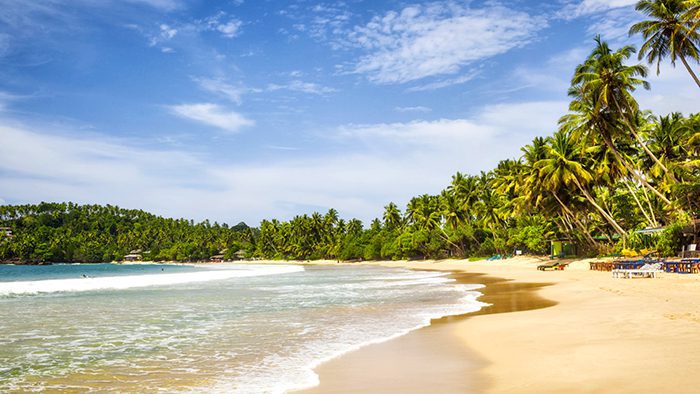
Located three kilometers from Weligama along the CGHW (A-2), just beyond the southeastern point of Weligama Bay, is the low key village of Mirissa. Besides its virgin beaches, peaceful Mirissa has one claim to fame; the seas off its coast are ideal for whale and dolphin watching. Nearby Dondra Point is Sri Lanka’s premiere whale watching location. Visitors come from all over the world to see sperm whales, blue whales, and spinner dolphins moving along their migration routes. The months with the highest chance of spotting these majestic creatures are December, January, and April.

Although Dondra Point is easily accessed from various other nearby towns, Mirissa has the best available accommodations. These include luxury beach, wellness, and eco-friendly resorts. For information, schedules, and reserving whale watching tours from Mirissa, contact the Paradise Beach Club. Tours range from three to five hours in length, include breakfast, and cost approximately $50 per person.

Like Galle, the town of Matara is an ancient place that still bears testament to European colonial occupation. The Dutch used Matara as a strategic port for the trade of cinnamon and elephants. The Nilwala River is the third longest river in Sri Lanka and runs through Matara, dividing the Old Town from modern Matara. There are two forts to visit: Main Fort and Star Fort. The Main Fort, or Matara Fort, is located in the Old Town and was constructed by the Dutch in the 1630s. Visitors can walk along the Main Fort and see the colonial houses, the Dutch Reformed Church, St. Mary’s Church, and get unobstructed sea views along the edge. Unlike the Galle Fort, Matara’s Main Fort was badly affected by the 2004 tsunami and so many of the colonial buildings have fallen into disrepair.

Other attractions in Matara include the Muhiyiddenil Jeelani Mosque in the Old Town located close to the bridge, Star Fort in modern Matara across the River Nilwala, and the Weherahena Buddhist Temple that features an immense statue of Buddha. Visitors can also snorkel at Polhena Reef, which is located about two kilometers from the city center. The reef is safe to swim as the coral creates a natural barrier to protect swimmers from strong tides. Getting around by tuk-tuk is the easiest mode of transportation. Matara is located about 45 kilometers from Galle along the CGHW (A-2).

The Southwestern coast of the island of Sri Lanka is one of the most magical places on Earth and is relatively undeveloped in terms of beach resorts and modern cities. My stay at the Aditya Resort in Galle was phenomenal- it was the perfect place to come back to each day after hours on the road and sightseeing on foot. The Galle Fort will transport you to a different time- when trade was king and the Dutch were solely in control of the territory.
Between the masks, moonstones, and wooden Buddha carvings my suitcase was about to explode after I visited this region of the country. There is so much to be discovered along the shores of Southwestern Sri Lanka. Aside from the sprawling beaches, temples, and attractions, there is something to be said about the friendliness of Sri Lanka’s coastal towns. The people are warm and always willing to impart knowledge about their customs and culture. The CGHW (A-2) roadway is the main road running along Sri Lanka’s west coast. It is often referred to simply as “Galle Road.” Tuk-tuks are a great way to get around in Galle and each of the towns, especially if you do not have a driver.
My biggest suggestion about Galle and the day trips in this guide is to just get out there! Do it before hotel chains begin to develop this area into resort towns and man-made beaches. Pristine oceanfront properties do not last too long in this day and age, and I have no doubt that the western coast of Sri Lanka will one day become one of the world’s most popular tourist hot spots. For now it has sleepy fishing villages, historical sites, charming eco-friendly hotels, and lazy beaches. And I wouldn’t have had it any other way.
Time zone: GMT +5:30 hours (Indian Standard Time)
Capital city: Colombo
Languages spoken: Sinhalese, Tamalese and English
Currency: Sri Lankan rupee (LKR)
Currency converter: XE
Getting around: When traveling between cities, buses and trains are best. Buses can be really crowded and are seldom air-conditioned. Though trains are slower and can be crowded as well, they often considered the more comfortable mode of transportation. When in the city, tuk-tuks, buses, taxis, and, in many cases, simply walking, are all viable forms of transportation. In some cases, cars and drivers can be hired for a day or bicycles can be rented.
Tipping policy: Service fees, typically 10%, are included at most restaurants. Drivers and guides will also expect tips. A tip of 50 LKR is acceptable for hotel doormen and the people who collect guests’ shoes at the temple.
Electricity: There are two types of sockets, the Type D Indian 5 amp BS-546 and the European CEE 7/16 Europlug.
Entry/exit requirements: As of January 1, 2012, all holiday and business travelers to Sri Lanka must have an Electronic Travel Authorization (ETA). This can be obtained online through the Sri Lanka Electronic Travel Authorization System website.
Health and safety: Though cases are rare, dengue fever is endemic to Sri Lanka. The mosquito-borne illness, though treatable, has potential to be fatal. The only way to prevent contracting the dengue virus is by avoiding getting bitten by mosquitoes. Use a reliable cream or spray insect repellent to keep mosquitoes at bay and sleep under a mosquito net whenever possible. Symptoms usually begin four to seven days after being bitten by an infected mosquito. Seek medical treatment if you think you have dengue fever. Adequate emergency medical treatment in private hospitals can be expensive. It is advisable to have travel health insurance coverage during your stay. We recommend the Explorer package by World Nomads. To avoid unwanted attention, refrain from displays of wealth including wearing expensive jewelry and producing large amounts of cash.
Best time to go: Sri Lanka has two monsoon seasons, which means your trip does require some pre-planning. The dry season in the south western area of the country is between December and March. The dry season in the northern and eastern sections of the country lasts from May to September. Between October and November, sporadic rains occur throughout the country. December through March is the most popular and the driest time to visit.
In Galle, the high tourist season lasts from November 15 to January 20. During this time visitors can expect to pay higher rates at hotels. We recommend visiting in February or March to take advantage of low room rates and dry weather.
Did you enjoy our article of what to see in and around Galle? Leave us a question or comment below!
Counter
101 Countries • 1432 Cities